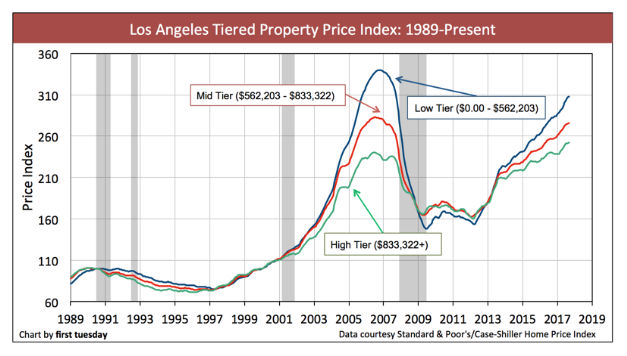CommentsPLANNING WATCH-The modern lesson of the story of the Trojan horse is to be wary of unexpected gifts, knowing that Greek forces at war with Troy gave the city a faux peace offering, a hollowed out horse statue secretly filled with their troops.
Now, several millennia later, at the height of the Covid-19 Pandemic, our Trojan horse is the calming presence of reassuring electronic and print media, buttressed by daily briefings from attentive elective officials. Much of what they tell us is useful, but not all of it.
How do we separate the wheat from the chaff? How trusting should we of press and media coverage during a global Pandemic? When you read this column, Los Angeles County will still be California’s Covid-19 epicenter. Nationwide, in the United States 60,000 plus people will have died, more than the Korean War and Vietnam War. In the U.S. as a whole -- more than 1,000,000 people -- will have contracted Covid-19, about one-third of the planet’s diagnosed cases.
Furthermore, according to public health researchers, the number of Coronavirus cases that have not been tested or diagnosed, including people who are asymptomatic carriers, is much higher than the official statistics. One measure of these additional cases is the number of excess deaths in March 2020, about 25,0000 in Europe and the United States, compared to previous years and attributable to unknown Covid-19 infections.
It has been 102 years since we experienced a similar Pandemic, the misnamed “Spanish” flu. Therefore, it is understandable that we reflexively turn to mainstream media and elected officials for solace. But, as I have reported in several recent CityWatch columns, behind the detailed Covid-19 coverage by the Los Angeles Times and Eric Garcetti’s calming heart-to-hearts, lurks a concealed agenda that needs to be called out. In particular, despite LA's high rates of infection and death compared to other cities and countries, the continued defense of exemptions for non-essential construction projects from the Coronavirus closure orders stand out. When Los Angeles continues to have rising levels of Covid-19 infections and death, City Hall’s green light for the nonstop construction of speculative McMansions and luxury apartments should not be given a free pass.
In a page-long article in the April 26 Los Angeles Times, "Builders nail down an Exemption: Projects of all sizes – deemed essential by the State – continue in LA despite the Pandemic", the paper interviewed many industry spokespeople and public officials who justified the State’s and City’s total construction exemptions in unconvincing detail.
Their justifications boil down to three familiar claims, some of which, to the credit of the LA Times’ reporters, are discredited by the employees and LA residents they interviewed for their article.
Justification 1: The State of California and City of Los Angeles have a housing shortage, and therefore the construction of housing during the Pandemic is essential.
But, as pointed out in many previous CityWatch articles, there is a complete mismatch between the expensive housing in the construction pipeline and state and city’s vast unmet need for low-priced housing.
When the new housing under construction is eventually completed and sold or rented, these McMansions and luxury apartments will be far beyond the financial reach of those who are homeless, camping in cars and vans, couch surfing, living in overcrowded dwellings, or moving from LA to less expensive housing market. Furthermore, new McMansions do not increase the supply of housing, and therefore address the housing crisis that officials invoke to justify their construction exemption. They simply replace bulldozed older homes with quickly built replacement houses that are three times as large and three times as expensive, while sheltering the same number of people.
Furthermore, the market housing under construction has two other negative consequences. It displaces lower income residents, the demographic group most likely to use mass transit. They are replaced with high-income tenants, who seldom take METRO busses or subways. This explains why METRO subway and bus ridership is declining, especially in neighborhoods with extensive in-fill market-rate housing construction, like Hollywood and Koreatown.

Finally, new, expensive housing pulls up the rents of surrounding housing, such as older apartments. When those landlords see the astronomical rents for new nearby apartments, in the range of $4,000 to $7,000 per month for a one- or two-bedroom apartment, they respond in kind, by raising, not lowering rents. The following Case-Schiller chart reveals that low-priced housing prices peaked in 2007 and by 2019 had nearly caught up. In contrast, the highest priced residences, the housing that the construction industry is now furiously building, exceeded its 2007 peak in 2017. Since then, the price of expensive housing has increased even faster than middle and lower priced housing, despite its high vacancy rates.
Based on these data, it is safe to assume that the continued construction of McMansions and luxury apartments during the Pandemic will not increase the supply of the low-priced housing. Furthermore, due to quirks in Los Angeles’s Rent Stabilization Law, the supply of low-priced housing is steadily decreasing. Because of vacancy decontrol, all apartments built before 1978 can be re-rented at market rates when tenants move out. The result is a shrinking supply of low-income housing, despite growing demand and construction exemptions from Covid-19 closure orders.

Justification 2: The City of Los Angeles has developed rules for safe construction work during the Pandemic, which are being enforced and followed.
It is true that the Mayor Garcetti’s Executive Order of March 19, subsequently updated on April 27, requires social distancing at construction sites, all of which are categorized as essential. Although this Executive Order states that violations are a misdemeanor, he only urges the LAPD to enforce them. So far, there is no evidence that the LAPD enforces the Mayor’s Covid-19 Executive Orders. There is also scant evidence that the Department of Building and Safety (LADBS) issues misdemeanor citations for violations of the Mayor’s orders or their own safe construction guidelines, such as entry logs and the provision of soap, water, and hand sanitizer stations at active construction sites.
According to the LA Times article, LADBS claims to have inspected 24,000 construction sites, issued 215 citations, and shut down three sites. If any CityWatch readers have observed these inspections or personally know of any misdemeanor citations and shut downs, please let me know ([email protected]) or post a comment to this column. As for me, I have biked by hundreds of active construction sites in many Miracle Mile and Beverly-Fairfax neighborhoods. I have never seen an LADBS inspector, a posted citation or shut down order, a hand washing and hand sanitizer station, an entry log, or employees following social distancing laws.
Nevertheless, construction industry advocates declare their work sites are safe, even though the LA Times identified a number of major construction sites with Covid-19 cases, including the SoFi stadium in Inglewood, Frank Geary’s mixed-use Grand Avenue project, and the LAX midfield satellite concourse.
Justification 3: Construction is essential to the local economy, and therefore it should continue.
Even if the claims that construction work can be conducted safely during this Pandemic were true, that does not make non-essential construct work essential, and therefore qualify for closure order exemptions. There is absolutely nothing essential about the construction of McMansions, luxury apartment buildings, mixed-use commercial buildings, another LACMA makeover, and a sports stadium. They are not homeless shelters or medical facilities, only speculative business ventures funded by real estate investors whose cronyism in the form or campaign donations and lobbying bought them influence.
The same claims about work site safety and economic importance could be made for nearly all businesses shut down by State and local Pandemic safety orders. But, unlike construction projects, these companies do not have the option of opening their doors once employers install hand washing and hand sanitizer stations, maintain an entrance log, and scrupulously follow all State and City executive orders, including CDC Guidelines, especially social distancing rules and requiring all employees and customers to wear face masks and gloves.
The City of Troy had to learn the hard way about being too trusting, and this should be our model in evaluating media coverage about the Pandemic, including the role of our elected officials in carving out exemptions for non-essential construction.
(Dick Platkin is a former Los Angeles city planner who reports on local planning issues for CityWatch. He serves on the board of United Neighborhoods for Los Angeles (UN4LA) and is co-chair of the new Greater Fairfax Residents Association. Please send comments and corrections to [email protected].) Prepped for CityWatch by Linda Abrams.















